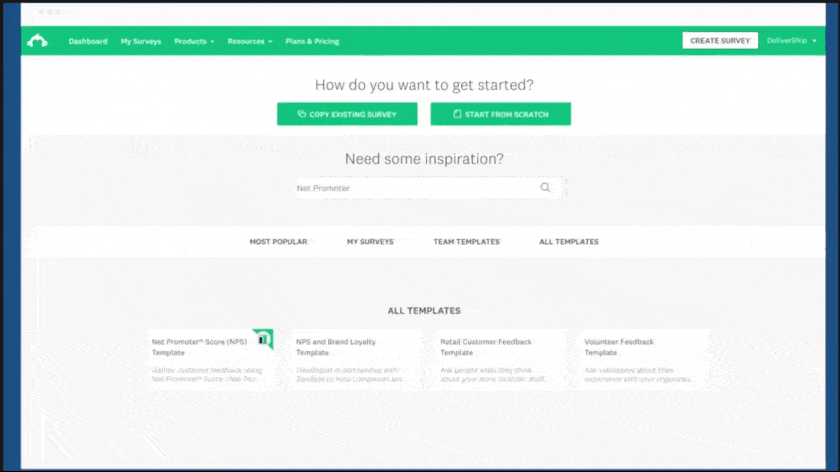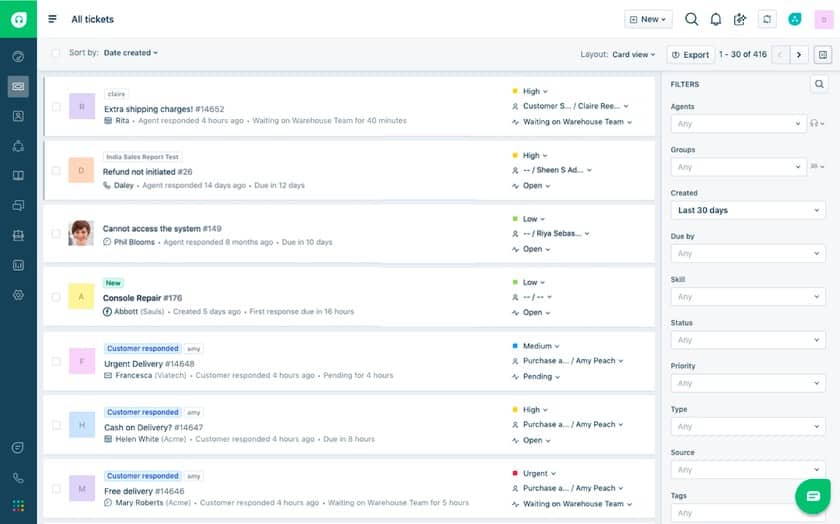An easy way to ensure your team is providing a best-in-class customer experience is to quantify customer satisfaction using a metric known as CSAT. This metric helps you learn what aspects of your business attract or displease clients. Ways to measure and improve customer satisfaction include running CSAT surveys, opening up support channel options, improving handle times, and training employees well—grounded on company values and best practices.
According to the Zendesk Customer Experience Trends Report, 75% of customers are willing to spend more on businesses that offer an excellent experience. While there are many aspects to work on when it comes to your product or service and communication, the good news is that customer satisfaction is attainable.
Below are some tips to improve customer satisfaction you can implement for ideal outcomes:
1. Implement Customer Satisfaction Surveys (CSATs)
CSAT is used to gauge a customer’s satisfaction with a product or service by asking a variation of the question, “How would you rate your overall satisfaction with the products/services you received?” Customers can select from a scale of 1 to 5, where 1 is very unsatisfied and 5 is very satisfied. Only those who selected “Satisfied” or “Very Satisfied” are treated as satisfied customers.

Zendesk Support allows businesses to implement a CSAT survey in just a few clicks. (Source: YouTube)
CSATs help businesses determine the overall performance of products and services in meeting customer expectations. It also lets them discover which offering needs improvement and which needs promotion.
2. Explore Other Types of Customer Satisfaction Surveys
You can also try other types of customer satisfaction surveys, depending on your needs. For example, you can set up a Net Promoter Score (NPS) survey if you want to measure customer loyalty and discover unsatisfied customers.

Providers, like SurveyMonkey, offer NPS templates for easier implementation. (Source: YouTube)
This type of survey asks your customers, “How likely is it that you would recommend our company/product/service to a friend or colleague?” Respondents can select a score from 0 (not at all likely) to 10 (extremely likely). You can send this out through a form, email, text message, website pop-up, or customer feedback software, like Podium.
Other ways to measure customer service include:
- Post-purchase survey: Get feedback on a specific purchasing experience
- Product or service development survey: Determine feedback on new products before launch
- Usability survey: Receive feedback on the overall experience of a system or website
3. Improve Average Handle Times (AHT)
There are many ways to improve average handle times, and one of them is to properly set up your business phone service’s interactive voice response (IVR) menu. A well-configured IVR directs customers to the most appropriate agent, addressing their issues or inquiries promptly.
Additionally, more features can help agents speed up the process while handling a call, such as notes and artificial intelligence (AI)-powered suggestions. Businesses must choose the contact center solution that provides the most beneficial tools for their needs.
For more information, discover nine proven ways to improve handle time (AHT).
4. Provide an Omnichannel Customer Experience
According to Zendesk’s Customer Experience Trends report, 63% of their respondents always try to address their needs by finding answers on a company’s website first. This is one of the reasons why you should provide an omnichannel customer experience. Provide a self-help channel—like a knowledge base—to let them resolve their issues as fast and efficiently as possible.

Freshdesk Contact Center lets businesses manage customer messages from across channels in one platform.
(Source: Freshdesk Contact Center)
Other types of channels you can offer may include phone, email, social media, in-app, or webchat—enabling them to reach out to you in ways they’re most comfortable with. Providers like Freshdesk Contact Center offer omnichannel features for this need.
5. Provide Proper Employee Training & Workloads
Aside from product and tech-related strategies, employee-focused efforts must be prioritized as well. Agents need ample training to become knowledgeable in products, services, and the company’s values as they represent the business as a whole. Moreover, they should be provided with reasonable workloads for optimal performance and to avoid possible burnouts that affect their skills.
Why Businesses & Call Centers Track Customer Satisfaction
Customer satisfaction is important as it affects current and future buyer behaviors. It is influenced by many factors, including a product’s or service’s quality, price, and support. When customers are satisfied, they buy more and spread the word about it—bringing in more sales for your business.
The efforts for customer satisfaction must not stop at the end of a new sale. According to B2B International, a business-to-business market research company, the cost of customer retention is only one-tenth of customer acquisition. Therefore, businesses must focus on keeping current customers as well as gaining new ones. It is a good practice to calculate the customer retention rate to determine if your business generates a good percentage or if you need to implement new strategies to improve it.
How to Know if Your Customers Are Satisfied
The most common source of information to determine if your customers are satisfied is their feedback. You can directly or indirectly review their feedback on your product or service by looking into review sites, social media, surveys, and open communication channels, such as email or chat.
High customer retention and referral rates indicate that their expectations are met or exceeded. However, you can also detect deeper customer satisfaction once you turn your repeat buyers into loyal ones. The chance of loyal buyers looking into a competitor is slimmer, and they are most likely to spread positive word-of-mouth and recommendations—which is beneficial for your continued business growth.
Reasons for Low Customer Satisfaction
As technology and competition advance, customer expectations tend to get harder to meet or exceed. Aside from the quality of the product or service rendered, low customer satisfaction is caused by one or many aspects concerning employee or platform performance. Let’s discuss some of the reasons for low customer satisfaction in more detail below:
Poor Customer Service From Employees
Businesses must provide excellent customer service regardless of where their customers are in the buyer journey. It can make or break their experience, which greatly influences their purchasing decision or repeat business.
When customers reach out to customer support, they expect that their inquiries or issues can be resolved smoothly. Most of them get frustrated about agents who lack knowledge of the product or service—making them unable to help them quickly. A report by NewVoiceMedia (bought by Vonage) states that 42% of buyers stop supporting businesses when agents are unhelpful or rude.
Weak Customer Support Platform
Aside from human errors, unreachable customer support can make potential clients switch to your competitor. This is why you should consider a customer service solution’s uptime to ensure that you are reachable whenever needed.
Potential issues arise when a business chooses a platform that does not come with the best customer service and VoIP business phone features they need. For example, when a company is dealing with high call volumes, it needs a tool that comes with an IVR system.
Lack of Available Channels
Aside from your customer service solution’s uptime, being available means your customers can reach you in a channel that they’re most comfortable with, such as phone and social media. While some buyers like phone support, others try to find answers through self-help solutions. Determine which communication options your customers go for to avoid offering those they are unlikely to utilize.
Looking for communication platform options? Check out our list of the best business phone systems to find out which product best suits your needs.
Bottom Line
Customer satisfaction is the ultimate goal of all businesses and providers, and it can be measured in several ways, such as CSATs and NPS surveys. Follow the tips to improve customer satisfaction to ensure a smooth buyer journey. Implement surveys using the proper communications platform for your business and prioritize agent training and management.